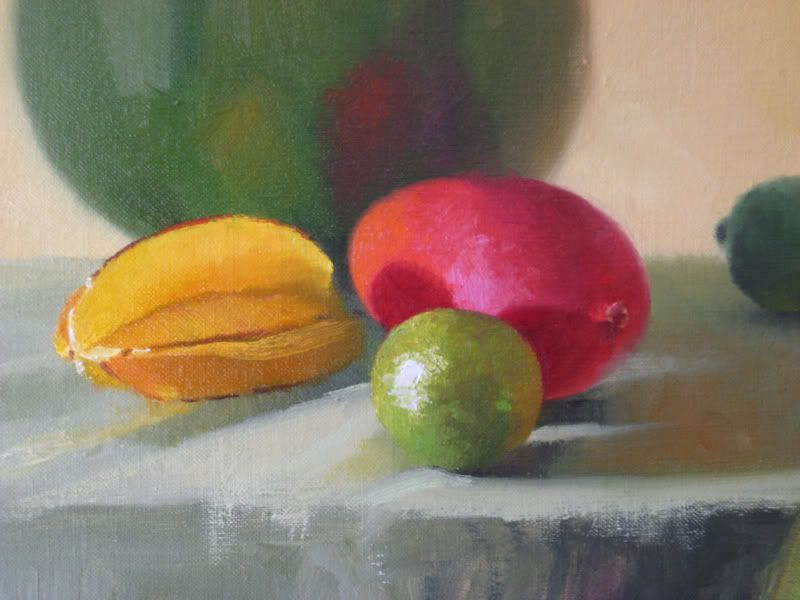Whenever I used to hear about Dynamic Edges, I got an image of some sort of superhero battling a razor blade. "Watch your edges." "Be careful of your edges." Those sorts of admonitions meant nothing to me, and I was too embarrassed to ask what an edge was.
Just in case you, too, are clueless and embarrassed, here's what an edge is: it's the place in the painting where one color leaves off and another begins. When we learned to color in a coloring book, we were told to stay in the lines, and from that point on we thought perfection meant having a nice, clean edge. We could cut clean edges when we painted the trim around our windows. We could really stay in the lines when we drew our design and painted it in on our canvas.
But... Dynamic edges? Well here's the thing: real life doesn't have sharp edges. Nearly everything you paint will have some sort of gradual transition from one color to the next. A lemon on a red cloth will be just ever so slightly blurry -- a little bit out of focus. This is called a soft edge. An apple on a red cloth may even just plain blend into the cloth. This is called a lost edge.
In your painting, you want to have a variety of edges: some hard, some soft, some lost. When you have that kind of variety, you have achieved the great goal of Dynamic Edges. This is the way our brain processes light impulses, so if you paint with this in mind your paintings will be more believable.
As I developed my focal point, I made sure to vary the edges. You will see some obviously soft edges along the vase, and some obviously hard ones in the fruit. But observe more carefully and you'll find that each piece of fruit has some hard, some soft and some lost edges. Take a look:

Yes indeed! I hope to see some deeper values before you finish. I like your blog. Thank you, Gayle!
ReplyDelete